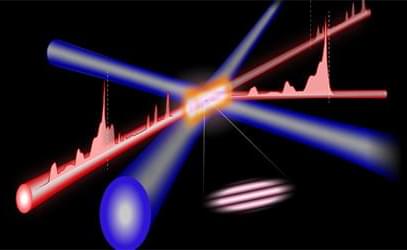When two laser beams converge on a volume of gas, their interference creates a diffraction grating made of plasma that can divert and shape a third beam.
Once a laser pulse packs more than 1018 W/cm2 or so of power, its electric field strips electrons from atoms and accelerates them to near light speed. This effect could lead to compact and highly efficient particle accelerators (see Viewpoint: Shooting Ahead with Wakefield Acceleration). But for various reasons to do with pulse generation, the main pulse is unavoidably preceded by weaker prepulses, which can muddle an experiment’s initial conditions and frustrate anticipated results. Now Matthew Edwards of Stanford University, working at Julia Mikhailova’s lab at Princeton University, and collaborators have demonstrated a setup that can delete meddlesome prepulses with unprecedented effectiveness [1].
A key component of the researchers’ setup was demonstrated in 2009 [2]. Two pulsed beams of the same wavelength converged on a volume of gas contained in a cell, ionizing the gas where the beams constructively interfered. The difference in refractive index between the plasma and the neutral gas created an instant and switchable diffraction grating.
